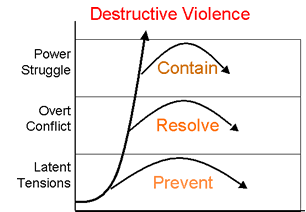The Teacher: Teaching Through Actions… Walking in Peace
February 08, 2004
By Barry Davis
The Middle Way – Mahatma Gandhi and Martin Luther King would, no doubt, have approved.
While politicians on both sides of the seemingly interminable bloody Middle East conflict remained entrenched, a small but growing group of Israeli Jews and Arabs have decided to take matters into their own hands. Actually, “into their own feet” would be a more accurate description of their peaceful protest.
Over the past couple of years hundreds of Jewish and Arab Israelis have taken part in silent peace walks in various regions of the country. One trek last year saw several hundred walkers traverse the Galilee region in the north of the country, from Haifa to Amirei Hagalil in the Upper Galilee near Safed. Discussion groups were held at nightly stopovers, and a sulha – a public act of forgiveness or pardon – which included often fiery discussion sessions involving Jews, Muslims and Christians, took place at the end of the walk.
There have also been walks through Tel Aviv, from Jaffa to Jerusalem and, more recently, a walk to the security fence that divides the Israeli Arab city of Umm El-Fahm from the Palestinian Authority where Israelis passed flowers across the fence to some of the 700 Palestinians gathered there. Dr. Stephen Fulder, British-born head of Middle Way that acts as a sort of umbrella organization for such peace walks and associated activities, terms the action a “peace pilgrimage”.
In a country in which practically any public gesture is construed, or misconstrued, as a political act, Fulder believes he and his co-walkers have managed to stay as close as they can to the apolitical twilight zone. “The peace walk is a new way of getting people out of their houses, and trying to do something which is not left wing or right wing, or violent or angry. It’s not entirely apolitical. I think it’s on the boundary between politics, psychology and social action. Silence does, actually, do something.”
Rather than hoist banners with angry slogans aimed at maximizing media impact, Fulder and his colleagues prefer the softly softly approach. Surprisingly, despite their unorthodox tactics, the walkers are achieving media coverage, both in Israel and abroad.
“Initially, people are not sure who we are or what we’re doing,” Fulder continues. “But, very often, there’s something that catches the imagination. There is a certain power in the silence which even Israeli Arabs now appreciate. At first, they sometimes say: ‘We’ve been silent for 50 years. Now we need to shout about discrimination and the life we live here.’ But then many realize the power of our sort of thunderous silence. We feel that just talking about things that have been discussed so many times before simply will not do the trick.”
But, Fulder is far from naive. He knows that any public activity that involves Jews and Arabs is going to have some political connotation, intended or otherwise.
“It is inevitable that the peace walks will be construed as a political act. In a sense they are. I think you have to differentiate between obvious, overt politics and subtle politics which is almost everything you do in the realm of social action – especially here in Israel.”
Unlike many Israelis – Jews and Arabs alike – Fulder believes the Palestinians are just as keen to work towards a peaceful settlement of the regional conflict as the Israelis. “There were about 150 Israelis who took part in the walk we did recently to the security fence in Umm El-Fahm. There were about 700 Palestinians on the other side of the fence who came to meet us, under the slogan ‘Build Bridges’, and we exchanged flowers across the fence. It was very moving. The groundswell in Palestinian communities to do anything to create a movement towards peace is enormous.”
That view is fully endorsed by fellow peace walker, Umm El-Fahm resident Jihad Hamdi. As a native of Palestinian refugee camp Jenin, Hamdi is familiar with the grass roots of the Israeli-Palestinian conflict, from both sides of the security fence. He is also trying to initiate peace walks in the Palestinian Autonomy.
“We are teaching people from the villages around Jenin how to walk in silence,” says Hamdi. “Unfortunately, it still isn’t possible to have Jews and Palestinians taking part in the same peace walk on the Palestinian side, but that day will come.”
In fact, the recent peace walk came about as close as possible to achieving that goal.
“I walked up to the fence with Jews on the Israeli side of the fence, and then I crossed over to be with the Palestinians,” Hamdi explains.
While Hamdi confesses to being an eternal optimist, even he didn’t expect the size of the Palestinian response to the peace walk call. “There were about 40 Jews in my house in Umm El-Fahm before the walk. After a while I told them I was leaving for the fence and that I would meet them there. On the way I bought about 100 flowers to throw over the fence – I thought there’d be about 40-50 Palestinians. I was amazed when I saw 700 of them gathered there. I know a lot of Israelis feel they have no partner for peace on the Palestinian side. But, I can tell you from my experience, 99.9 percent of the Palestinians want peace. Our peace walks are more powerful than anything the politicians can say or do.




